Covertly spying on your competition is crucial to long-term success. It’s not strange that many are interested in competitor keywords, as they’re one of the most important metrics. To know how your competitor is performing, you need to see his ranking keywords.
This ranking can be on Google or any other search engine you’re interested in. To make this possible, people have come up with different SEO tools with specific functions for this purpose. We touched on this in our article about competitor analysis – check it out.
In today’s guide, we’ll focus on analyzing competitor keywords and using them to your advantage. We’ll teach you not only how to discover your competitor’s ranking keyphrases but also which tools to use for this purpose.

What Are Competitor Keywords?
Let’s start with the basics. Competitor keywords are the keywords your rival website ranks for in search engines. A competitor keyword can refer to an organic or paid keyword and it’s very important to discover to be able to outrank a specific competitor.
Besides, knowing your competitor’s keywords can lead to more opportunities to overtake the rival and improve upon its content. Let’s say your site is about SEO tools and the competitor keyword is “cheap SEO tools.” You can use this keyword to your advantage.
Identifying it is the first step, after which, you can optimize your content around it, provide more valuable information, put your effort into better readability, and so on. Speaking of readability, Surfer SEO is a solid tool for optimizing your content.
How to Discover Competitor Keywords?
Performing a competitor keyword analysis is nearly impossible without a powerful SEO tool. That tool must have a large database to fetch the required information. In our experience, Semrush seems to be the top choice and we never had issues with it.
This tool allows you to find organic, paid, and even PLA competitor keywords. On top of that, there’s the Keyword Gap function, which allows you to find the phrases your rivals rank for but you don’t, which can be extremely useful for ranking higher.
We’ll discuss the Keyword Gap tool soon in this guide.
Finding Organic Competitor Keywords
But first, we want to show you how to easily discover the organic keywords of your competitor. In Semrush, visit the Organic Research tab and provide the domain address. Now, press Search, and Semrush will come up with all of the domain’s organic keywords.
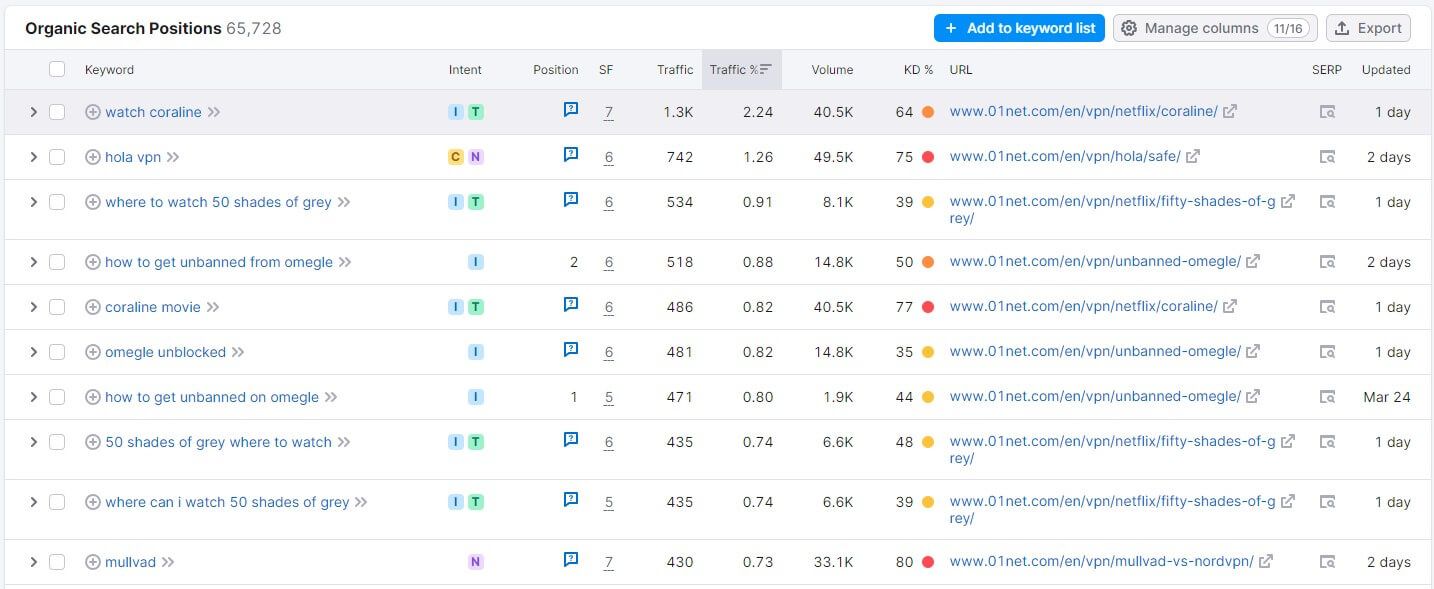
Clicking on the Positions tab and scrolling down will provide more information. You’ll see the number of ranking keywords and in the Position column, you’ll see the website’s ranking for each. For instance, for the keyword “how to get unbanned on Omegle“, our website appears first in Google SERP, which is displayed below.
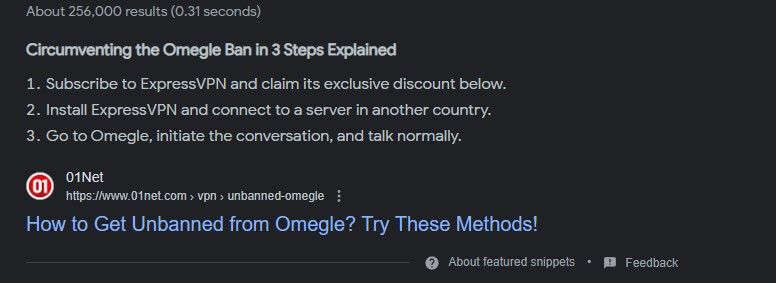
Semrush displays other bits of data about competitor keywords, such as estimated traffic, search intent, URL of each page, and SERP features. Search intent is interesting and we’ll go over it a bit later because it’s necessary for competitor keyword analysis.
Find Organic Competitor Keywords With Semrush
Discovering Paid Competitor Keywords
One of the best Semrush’s features is Advertising Research. This is a tool you can use to find the paid keywords of your competitors. Click on it and again, provide the domain address. Now, click on Search, and below, you’ll see the Paid Search Positions tab.
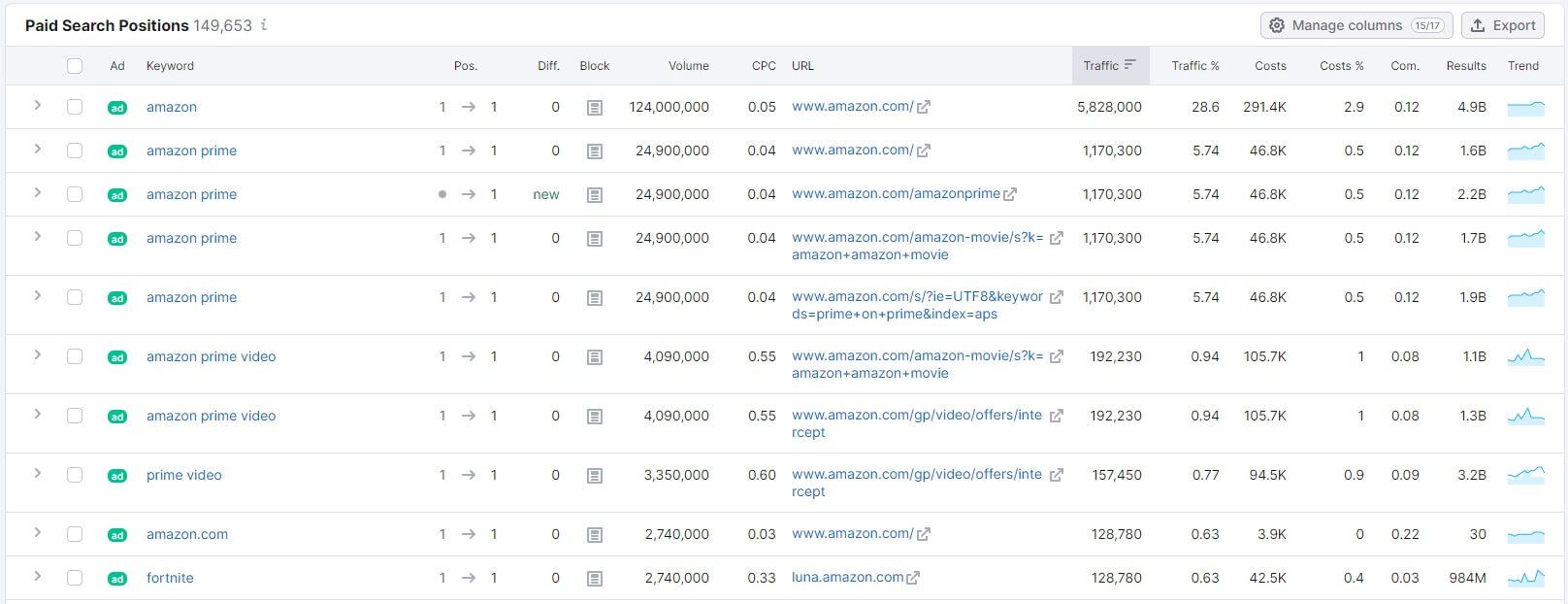
For Amazon, we can see around 150K paid keywords with their positions, monthly search volume, and CPC. We analyzed Amazon because it’s one of the largest sites, just to show you how it uses paid advertising. Semrush displays its traffic cost of $10.1M, which is impressive.
Finding PLA (Product Listing Ads) Keywords
Lastly, using Semrush, you’ll find it easy to discover PLA or Product Listing Ads keywords of your competitors. Again, we’ll use Amazon. The tool functions the same. Again, click on PLA Research in Semrush, provide the domain name, and press Search.
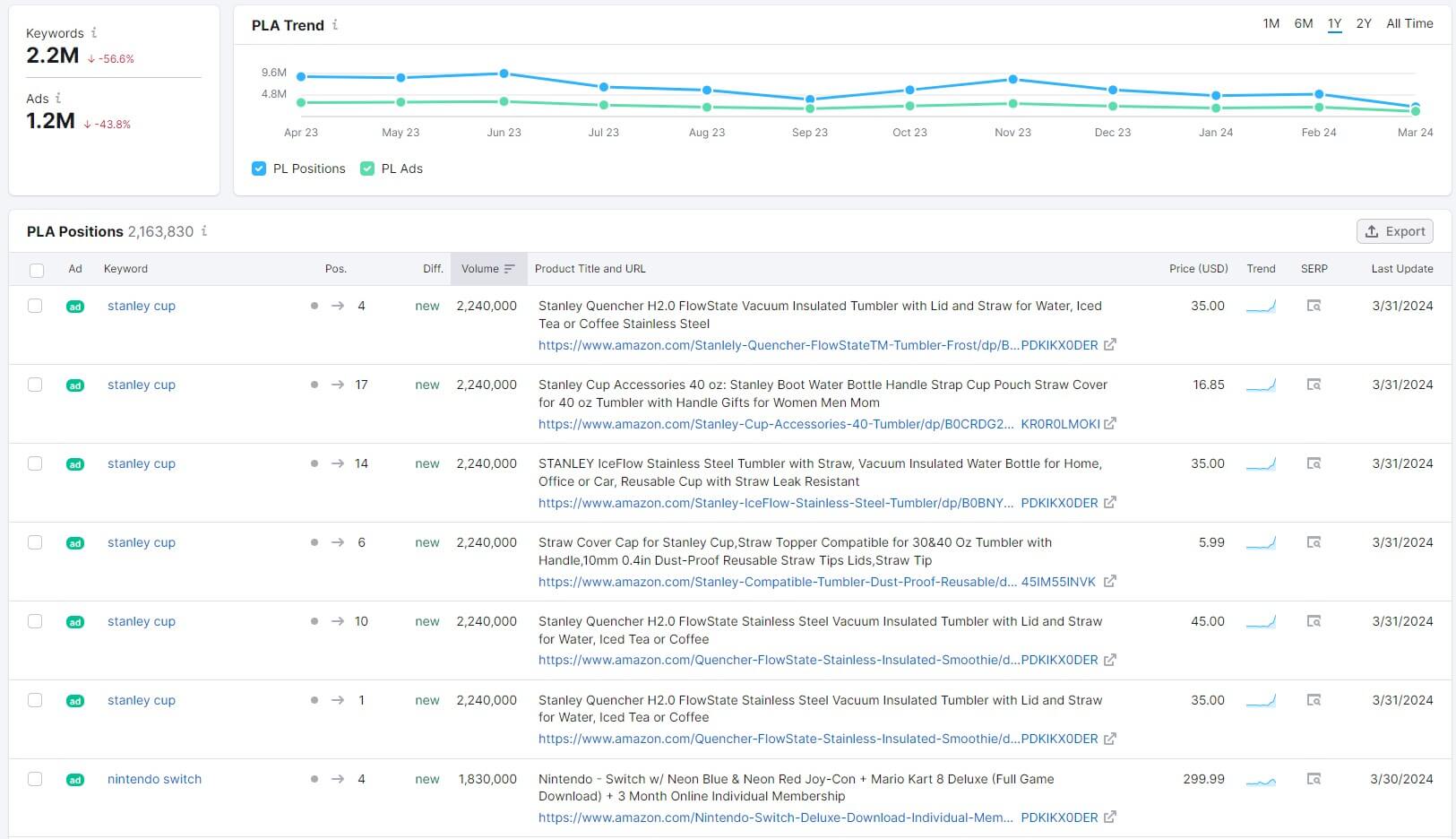
What does this tool show? It shows which keywords trigger the domain’s Google Shopping ads. In the PLA Research tool, you’ll find the PLA Positions table with such keywords. Now, Amazon is primarily a shopping site so for it, there are 2.2M PLA keywords.
The words “Stanley Cup” or “Nintendo Switch” are pretty popular, as you see, and when you type them in Google in the US (which we used as a set location), you’ll likely see Amazon’s offers.
Keyword Gap
As promised, we’ll go over the Keyword Gap tool as well. When you open it in Semrush, you’ll be able to compare your domain to four more competitors. Enter all domains, press Compare, and wait for 2-3 seconds while Semrush gathers all the information.
You’ll now see the top competitor keyword opportunities, overlaps, and keyword details for every website. The latter is exciting, as it’s displayed in a comprehensive table where you can apply certain filters to discover more keywords.
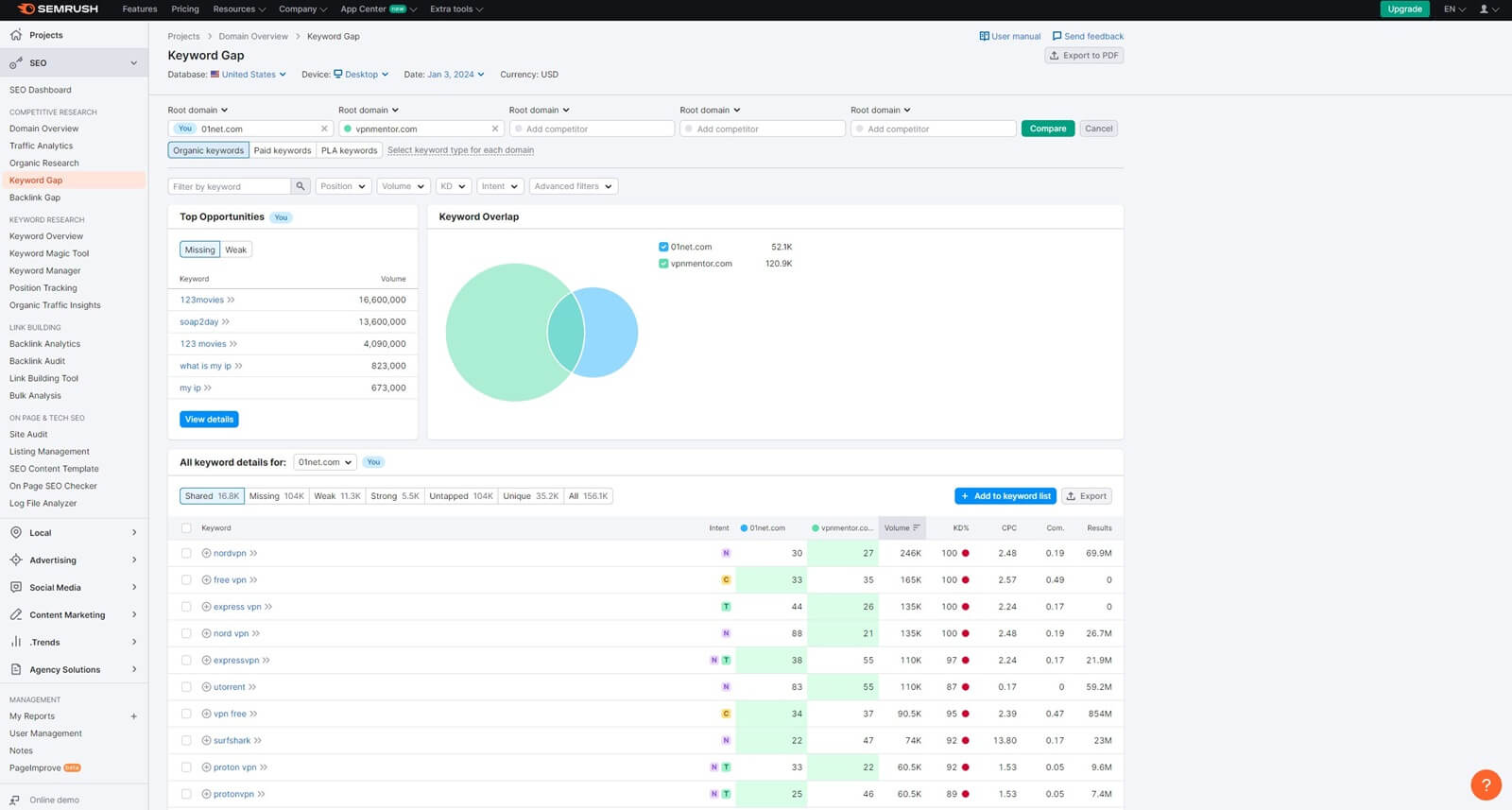
In this table, the Missing section shows you the keywords your rivals rank for and you don’t. Conversely, the Untapped section shows you the keywords at least one rival ranks for and your domain doesn’t. Semrush has the Strong and Unique sections too.
The first shows the keywords you’re ranking for higher than competitors, while the second displays your unique keywords. These are the key phrases only your domain ranks for. All of these are important for obvious reasons.
By utilizing Missing keywords, you can target your competitors directly and use their ranking keywords to improve your position in SERPs. Even Untapped keywords can be used to go after a specific competitor and capitalize on them.
Competitor Keyword Analysis Recommendations
Now that we know how to find your competitor keywords, let’s see how to do a thorough competitor keyword analysis and dig out more information. This is needed later on when you start to use these keywords to rank higher, which is also explained later.
Analyze the Monthly Search Volume
In our guide about SEO keywords, we touched on the importance of search volume. This factor shows you average monthly searches for the given phrase. The more volume it has, the better but sometimes, that’s not the case because the keyword is more competitive.
Semrush shows you the volume regardless of the tool you’re using. In Organic Research, when researching competitor keywords, the Volume metric will always be there. Either way, you should focus on keywords with a large enough volume that they’re worth doing.
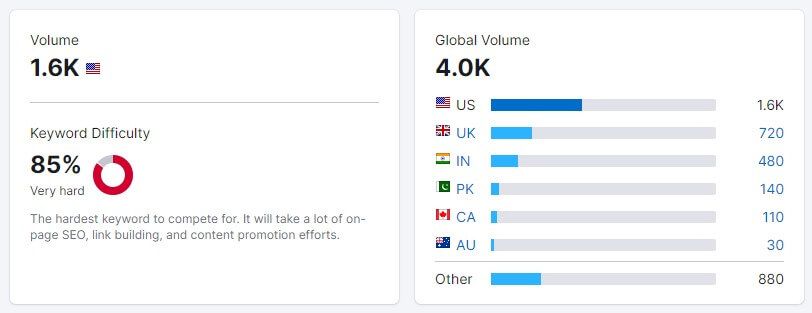
A very low volume usually isn’t great because there aren’t many searches. However, in some cases, these keywords are more specific, which can help you rank higher for specific queries. These keywords are also called long-tail, and in many instances, they’re pretty commercial.
Take Note of Search Intent
Speaking of commercial competitor keywords, Semrush is one of the rare SEO tools that shows you the search intent for each keyword. Simply put, this metric shows you what users are searching for and why, so it’s handy for identifying your audience.
Keywords like “VPN” or “best VPN” usually aren’t commercial – they’re more informative. However, a phrase like “the best VPN for Mac computers” is likely to be commercial because it’s more narrowed and the user is looking to either download or purchase the VPN for Mac.
Discover Keyword Search Intent With Semrush
Whenever you research competitor keywords with Semrush using any of its tools, you’ll get a search intent that looks like the one below. Next to each keyword, you’ll see a blue letter I for Informational, purple N for Navigational, yellow C or commercial, or fluorescent T for transactional.
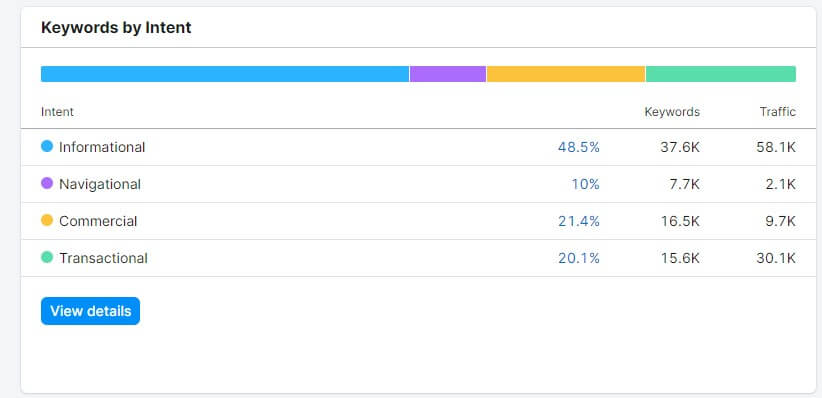
Some keywords can be informational and transactional and have I and T next to them. Some can be commercial and informational with C and I – combinations are vast. In Semrush, the Keywod Overview tool will display this metric but so will the Keyword Magic Tool.
In the Keyword Overview tool, you can click on View SERP and discover the highest-ranking sites that appear in SERP for the given keyword. You can then get inspiration from them and apply the same or better tricks to skyrocket your ranking.
Examine the Keyword Difficulty
With volume comes the difficulty, which can also determine whether the keyword is worth your time. This metric refers to the difficulty or ranking organically for the keyword, and the higher it is, the harder it is for you to rank for it.
In Semrush, you’ll find that the difficulty goes from 0 to 100, with a score of 50 or so being fairly easy. Everything above that is deemed difficult, hard, or very hard. The difficulty metrics are displayed in the Keyword Gap, Organic Research, and other tools.
A perfect combination of volume and difficulty will make it easier to rank for the keyword. A perfect scenario would be if the keyword had plenty of volume but low difficulty, in which case, ranking for it would be pretty simple. In practice, this isn’t always possible.
Research Competitive Density
Competitive density is more important for paid keywords, as it measures the popularity of the keyword among advertisers. This time, the metric goes from 0 to 1, and everything above 0.7 is considered difficult.
A higher competitive density score means it’ll be much harder to advertise using this keyword. Given other competitors that advertise for the same keyword, you’ll likely have to spend more on it and your higher ranking won’t be guaranteed.
The silver lining is that organic keywords are more important because users prefer organic search results rather than ads.
Find Out More About CPC
While we’re at advertising, CPC or Cost Per Click is also an important competitor keyword metric. It tells you how much you’ll have to pay to the advertiser when someone clicks on the ad. But why is this important for competitor keyword analysis?
Because it shows you which competitor is within your budget. This allows you to tailor your SEO strategy to your budget and target someone who you can “catch” at some point. Apart from that, CPC shows you the keyword’s value.
A keyword that attracts more visitors and conversions is likely to cost more – sometimes it’s $4 or $10 per click. On the flip side, a low-volume, less-popular keyword’s CPC can be below $0.3 per click, as it’s not competitive enough.
How to Use Competitor Keywords to Your Advantage?
With all the examination behind you, it’s the right moment to capitalize on the information you’ve gathered. You know all about your competitors regarding their ranking keywords, and with them, monthly search volumes, CPC, search intent, competitive density, and so on.
In that case, preparing your SEO strategy is much easier and to help you out, we have a few tips to ensure you use your knowledge wisely.
Group the Keywords
Semrush has a handy Keyword Manager tool where you can group competitor keywords promptly. These groups are often called clusters and they’re lists of keywords with the same or similar search intent. Why should you group your keywords into clusters?
We think it’s much easier to have them at your hand’s reach and ready for tracking. Moreover, this tactic enables targeting a multitude of keywords more effectively and prevents duplicate or cannibalistic content that negatively influences your SEO.
Best of all, you don’t have to write the keywords down. Regardless of the keyword-related tool in Semrush, the option to add keywords to a list is there. Simply select the keywords you want, click on “+Add to the Keyword List”, and add them or make another list.
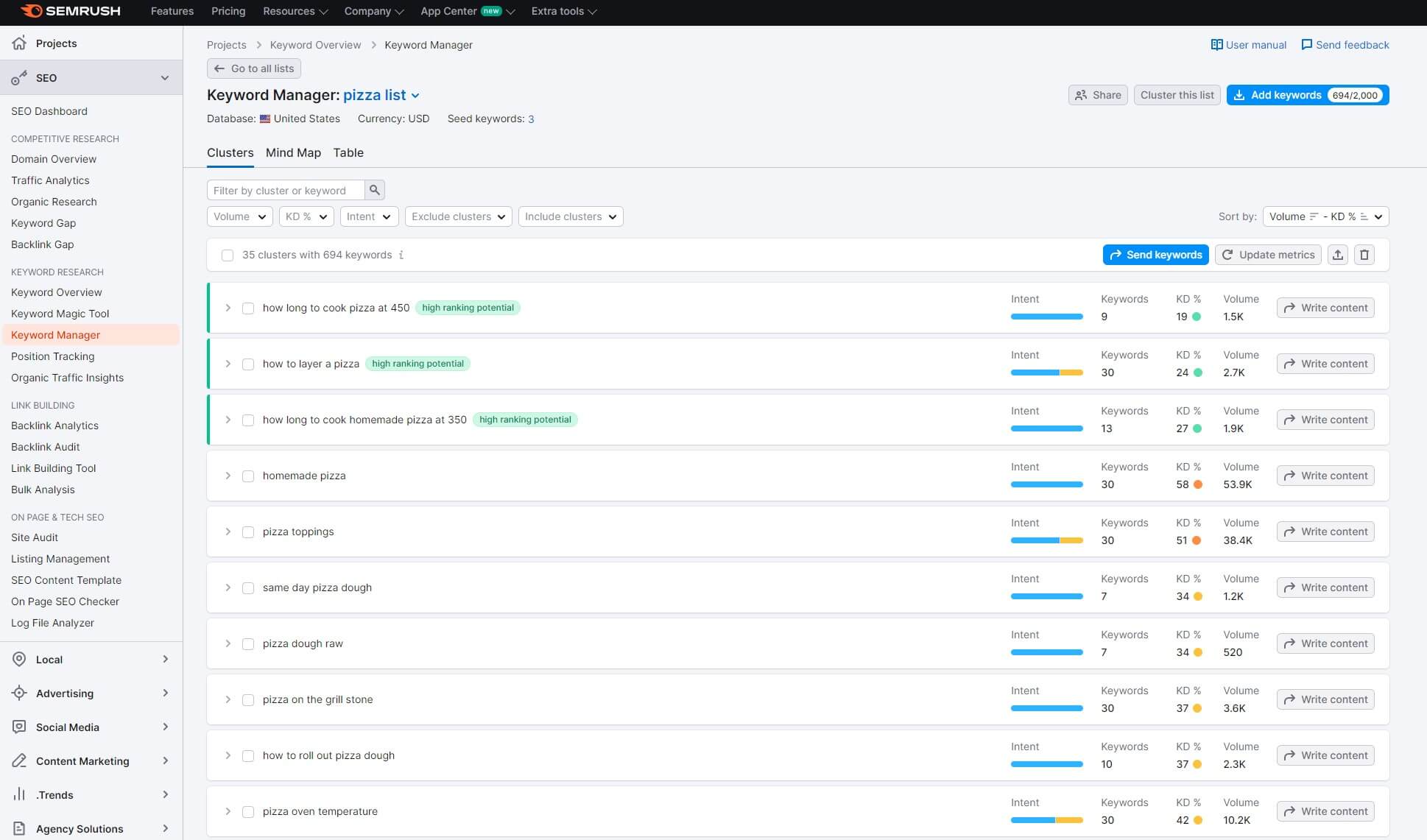
This list will be under the Keyword Manager tool later, so you can go there, find the list, and add the keywords to the cluster for easier understanding. In the example above, you can see our “Pizza List” and multiple keyword clusters for the subject.
We can now go to each cluster and use the keywords stored there to write new content.
Be a Better Version of Your Competitor(s)
When writing new content, you don’t want only to use your competitor’s keywords. You want to use them better and improve upon their content. We think that nothing beats quality content and time and time again, it proved to be true.
If you’re targeting organic keywords, you want to use the Organic Research tool. This way, you’ll also be able to analyze the SERP and see what the highest-ranking pages have. Their content is likely written well and is easy to understand.
Furthermore, some of these pages are likely in featured snippets. Take note of these pages’ word count, and the way they cover the topic, and disperse their ranking keywords. We also want to stress their internal or external linking, as these two are very important.
They might be linking to highly authoritative sites and have an excellent backlink profile. You can examine their meta description and title to see what they convey and how they attract their visitors. All of these can help you write better, more informative content.
The same applies to paid competitor keywords. You can use Semrush’s Ads History option to see how the keyword “behaved” a month, two, or more ago. This tool also lets you discover which ad anchor has been used by your competitors.
The Advertising Research tool can also help, as it’ll display CPC and keyword difficulty for each paid keyword. From here, you can visit the URL of your competitor’s page and examine it further to gain more inspiration for your page’s content.
Monitor Your Progress (Ranking)
We don’t need to mention this but you should likely track your ranking and keep monitoring your progress. In Semrush, the Position Tracking tool can track organic and paid keyword rankings and compare them to your competitors.
You can add a large number of keywords and up to 20 competitors in this tool. Then, when you go to the Overview tab, you can track up to 4 competitors at once by adding each, where you’ll compare several ranking factors of your choice.
You can, for example, select organic keywords and use the Visibility tab to see how each website ranks for the given keyphrase. The option to use Google Ads keywords is also there if you’re tracking your paid advertising campaign.
Semrush’s Position Tracking also shows you ranking changes and informs you when they happen. You’ll see exactly when your ranking for the keyword dropped or improved compared to your competitors to have a better understanding.
If you’re moving up the totem pole, you’re outranking your competition. If your Google ranking isn’t moving up, and instead, it goes down, your competition is gaining leverage and you need to reevaluate your strategy.
Best Tools for Competitor Keyword Analysis in 2025
Before we wrap up, it’s time to fulfill the promise of presenting the top 4 competitor keyword analysis tools. If you’re interested, stay with us a bit longer to find out more about them.
1. Semrush
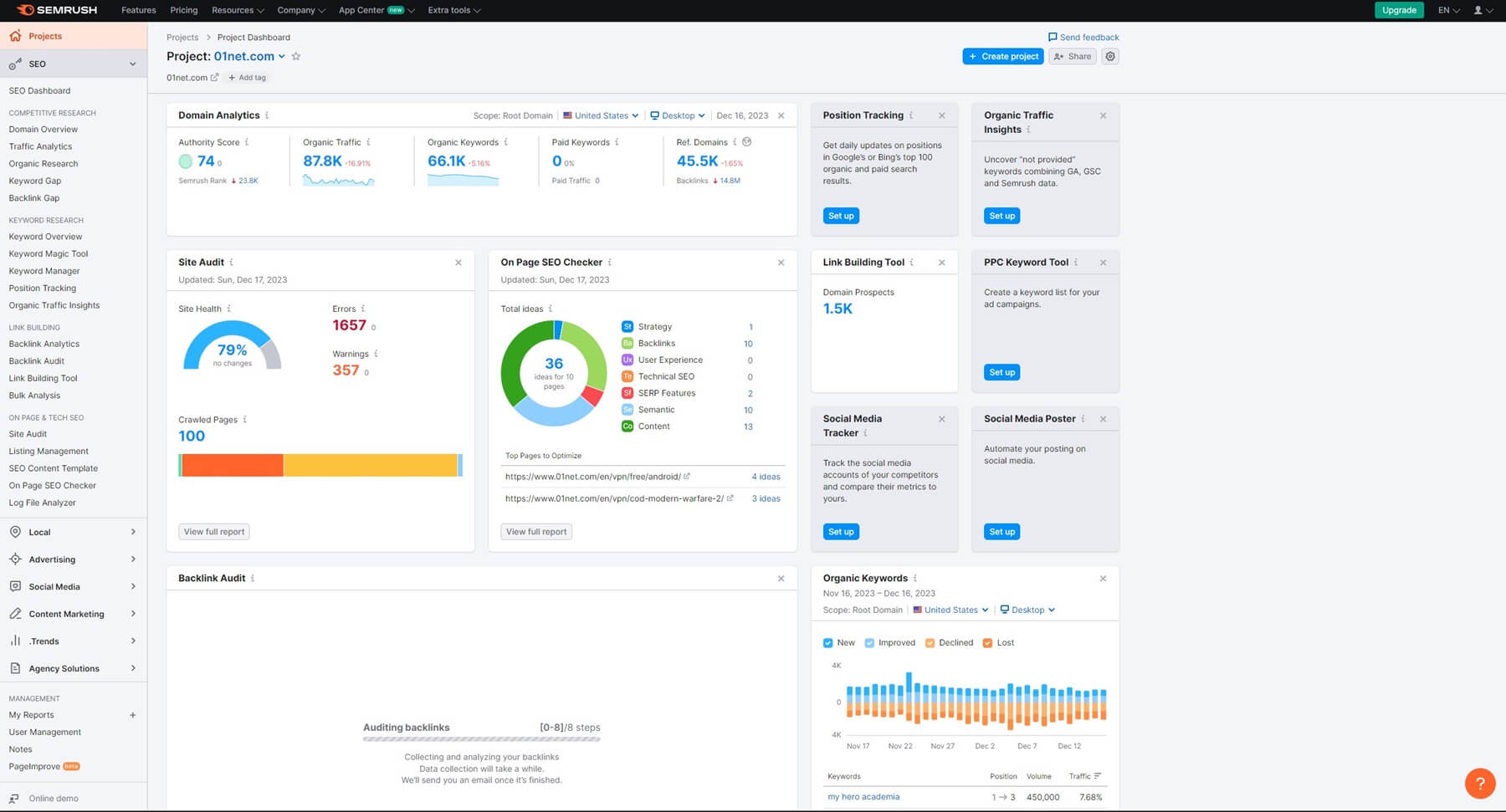
Semrush is our obvious choice. With tools like Organic Research, PLA Research, and Advertising Research, Semrush represents a go-to option for competitor keyword discovery. With it, you’ll cover organic and paid competitor keywords to target all fronts.
Above all, Semrush is simple to use and despite its intimidating interface at first, the tool’s intuitiveness is nothing short of impressive. Not to mention its speed and stability, especially when crawling web pages and performing an SEO audit on your domain.
Semrush is great at keyword analysis in general. The Keyword Overview tool displays metrics like search intent, difficulty, and volume of each keyphrase. Another metric is CPC, which is helpful when setting up an advertising campaign for specific competitor keywords.
We love Semrush’s clustering function, which helps with grouping keywords and accessing them later on to write new content. While Semrush is slightly expensive, the good news is a 17% discount for all annual plans with a long 14-day free trial through our site.
Bear in mind that Semrush’s plans are made for single users only and additional seats cost on top of the subscription. However, you’ll quickly forget that when you experience Semrush and its rich keyword database for in-depth competitor keyword analysis and research.
2. SE Ranking
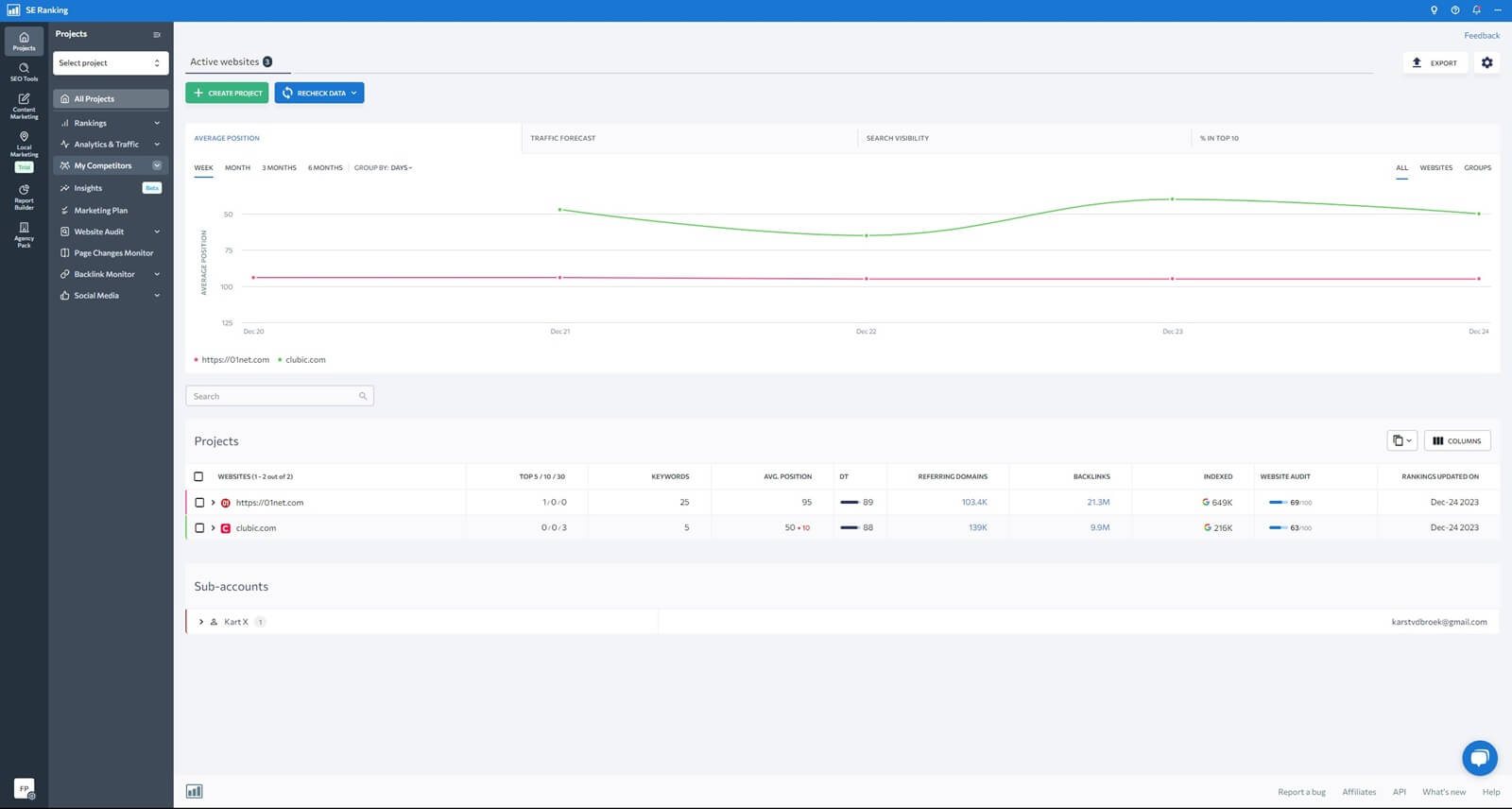
SE Ranking is Semrush’s closest competitor in our book. Its interface looks stunning and the service allows you to track keyword rankings easily, get info about keywords, and compare your domain to competitors with the Keyword Gap tool.
In particular, we love its Rank Tracking tool, which updates keyword rankings daily, allowing you to monitor your progress more precisely. SE Ranking’s keyword data is valuable, as it includes the same information as Semrush – even search intent, CPC, and ad history.
Also, SE Ranking displays vital information when comparing your domain to competitors. You’ll find missing and unique keywords and with SERP analysis, find out more about your competitors’ strengths and weaknesses. SE Ranking has a Local SEO package.
This one helps with local SEO strategy if you’re looking to overtake a specific domain in your country. SE Ranking’s attractive pricing structure is enticing for most users. It starts at under $45 a month, which is double the less of Semrush’s Pro plan.
On top of that, SE Ranking has a 14-day free trial with a handful of free tools at your disposal. We dislike its lack of a forever-free plan. However, we can’t deny its qualities as one of the top-rated tools for competitor keyword research and discovery.
3. SpyFu
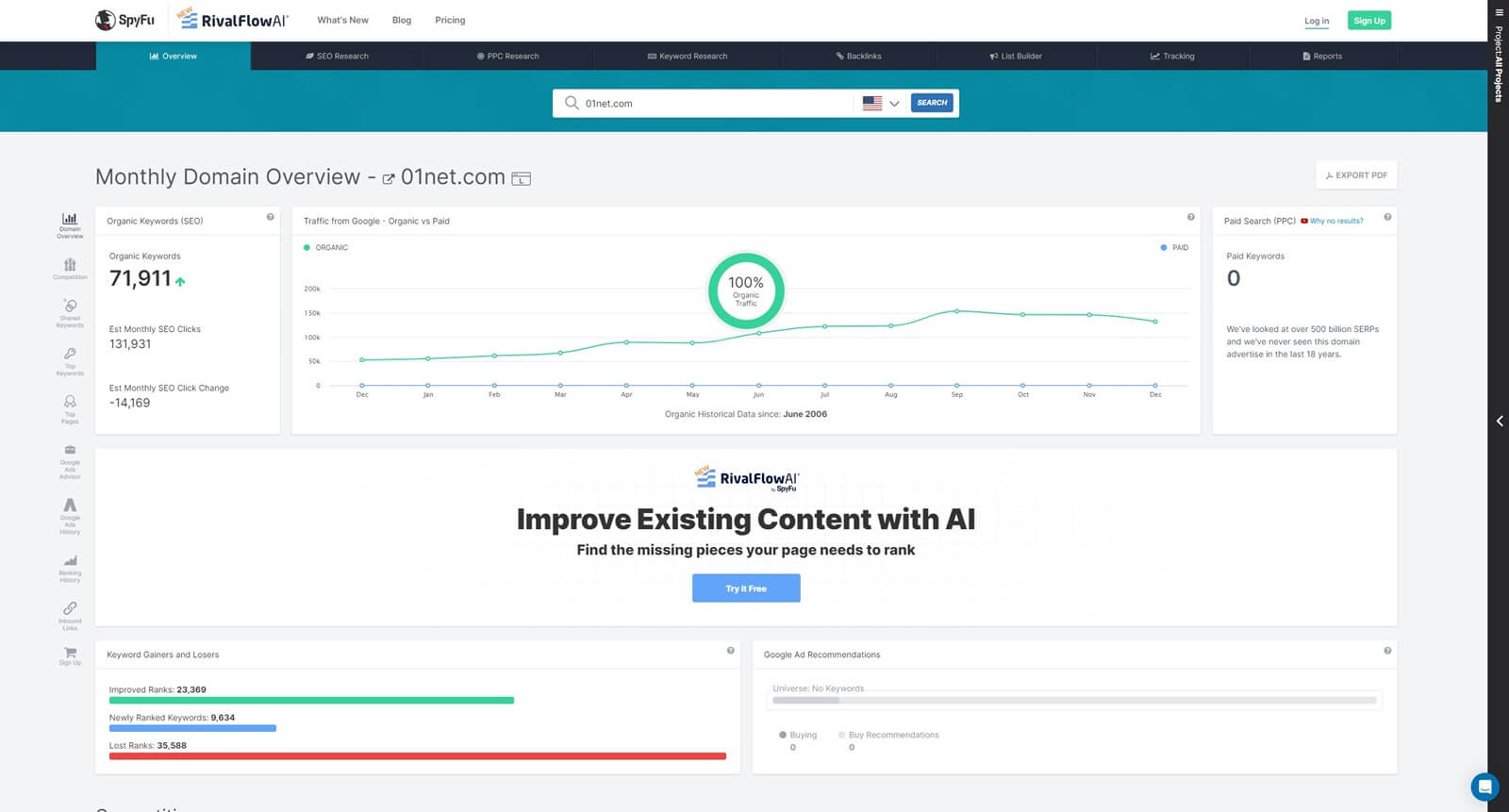
SpyFu is advertised as an SEO tool for spying on your competitors. Its cheap prices and a solid non-paid plan surely sound as exciting as it gets. SpyFu can compare your domain to competitors and help discover new organic and paid keywords.
Besides, its CPC/PPC Analysis is phenomenal, as SpyFu includes 15+ years of historical data with ad history. This makes SpyFu suitable for targeting organic and paid keywords and fire at all cylinders. Apart from this, SpyFu offers other excellent tools.
For example, there’s an entire SEO Marketing Suite and SpyFu can analyze unlimited keywords in its Professional and Team plans. Analyzing domains is also great with SpyFu because it easily discovers referring domains, organic competitors, and ranking keywords.
SpyFu is simple to use, alas, with a slightly dated interface. The free plan limits you regarding the amount of information you can get but is nonetheless a safe bet for those who want in-depth competitor keyword research tools. We compared SpyFu to Semrush as well.
It’s inferior but a lot cheaper, starting at just $16 a month for the Basic plan. We’ll agree that the professional plan at $36 a month is way better, with unlimited data, API access, 10+ years of historical data, and no limits on competitive analysis results.
4. Mangools
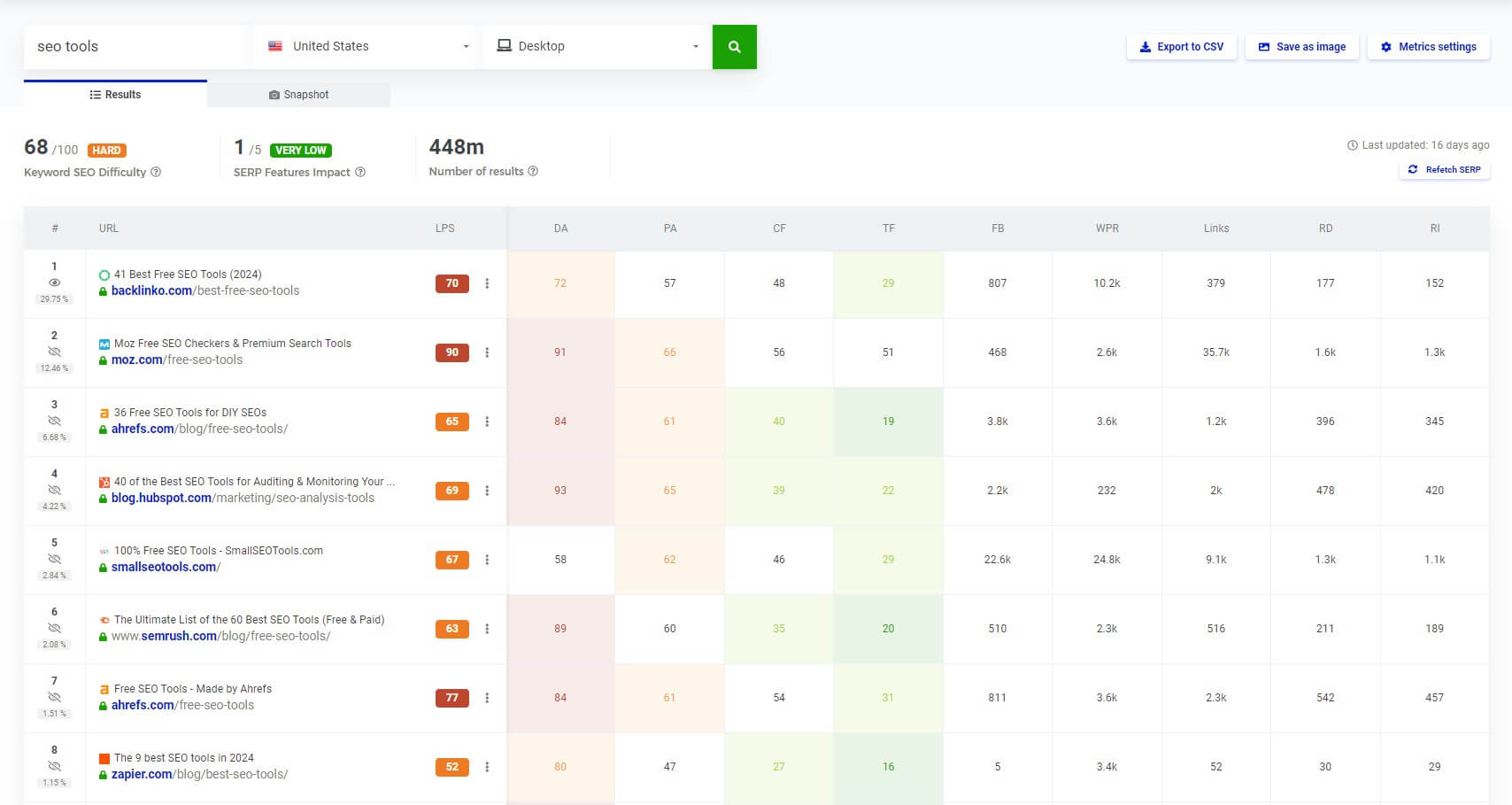
Mangools comes with a set of 5 nifty tools to spy on your competitors. The KWFinder tool explores keywords, their difficulties, and many other vital data. Making things better is the LinkMiner too, often used to explore competitor’s backlinks and referring domains.
This can help up your backlink game and allow you to request more backlinks from reputable domains. Mangools isn’t a slouch in terms of rank tracking. Its SERPWatcher tool allows you to provide a list of keywords and track their ranking per set parameters.
SERPWatcher can monitor even your competitors and see their rank changes in the grand scheme of things. While we’re at SERPs, there’s another tool titled SERPChecker, for SERP analysis. This further evaluates your competition to help you appear in SERPs quickly.
Finally, Mangools allows you to use its SiteProfiler, which we found quite appealing. It displays all site-related information and lets you reap all of it for a better understanding of your competition. It’s not better than SE Ranking or Semrush.
However, it’s extremely enticing because of two things. One is a FREE plan with some pretty generous limits. Another is a cheap starting plan at under $20 a month. Despite the cheap price, Mangools is a capable tool with plenty of options and features to play around with.
Summary
With all our promises fulfilled, it’s a good moment to let you perform your thoughtful competitor keyword research. You have everything you need – from top-ranking SEO tools to recommended strategies and tricks that you can implement today.
We recommend reading our detailed guide about competitive analysis – the link is at the start of the article. Once you identify your competitors, perform the keyword analysis by discovering their organic/paid/PLA keywords and analyzing each.
From there, craft better-quality content, cover your subjects more thoroughly, and obtain backlinks from authoritative sites. With time, your hard work will rear its head and you’ll start to see more traffic and conversions. Isn’t that what you wanted?